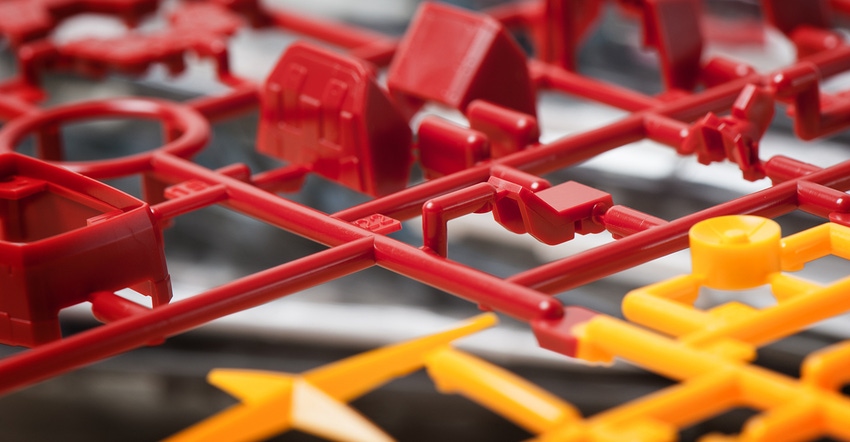The Troubleshooter: The Role of Moisture in Injection Molding Splay Defects
Moisture-related splay defects can be traced to a material’s drying state, the injection mold fittings, or the drying unit itself. Follow these steps to identify the source of the problem and correct it.
February 13, 2023

Plastic injection defects can lead to large scrap events and lost profits, and splay is one of the more frequent defects a processor must correct. The three main causes of splay are heat, moisture, and shear. This three-part series in the Troubleshooter column outlines key signs used to evaluate splay conditions. It will also profile key analysis points and recommend procedures to fix various splay scenarios. Last month, we focused on heat-related splay defects. Now, we’re moving on to splay defects caused by moisture.
Material
One of the primary contributors to splay conditions is the material’s drying state. Many materials require drying at specific times and temperatures. These are usually provided by the material manufacturer on the safety data sheet. The best way to determine if a material is properly dry is by using a moisture analyzer. Materials hot to the touch are not a guarantee that the moisture content of a material is low enough to be properly processed.
In addition, materials can be overdried. These conditions generally occur when material is left motionless in a hopper for significant periods of time. If a press is shut down four or more hours, it is good practice to bank the heat to 100°F. The lower temperature will keep the material in a dried state without over-baking it.
Mold
Another inspection point for moisture-related splay is the mold itself. Inspect water connections for leaking fittings, especially fittings on top of the mold. Inspect watered moving components such as slides or stripper plates for leaks while the component is performing in its action state. If chiller temperatures (50 to 65°F) are being used, inspect the mold for sweating caused by a humid environment. If the mold is sweating, the water will need to be run warmer at a slower cycle.
Central feed
Materials that sit for an hour or longer can take on moisture. It is best practice to drain off 15 to 20 pounds of material through the lines at startup. Verify that the material is hot in your hand and hard to hold — a temperature of 170°F and higher. As a final check, inspect the purge puddle while purging the press. The puddle should look clean, with no foam or bubbles. If there are any doubts, verify moisture content using a moisture analyzer, as stated earlier.
Dryer
The final point of inspection is the drying unit itself. If a satellite hopper is being used alongside the press, drain off the material in the cone. Material in the cone can be restricted from receiving dryer heat flow and taking on moisture. Dryer performance itself can be a cause of moisture-related splay events. The dryer supply hose should be hot — use a heat probe — and the return hose from the hopper should be warm. If either of these conditions is incorrect, the dryer should be inspected for poor mechanical operation. In addition, dryer desiccant beds should be replaced yearly to ensure proper moisture removal.
Step-based approach
Moisture-related splay defects become easier to correct when the proper steps are taken to identify the root cause. When troubleshooting these moisture-based defects, best practice requires review of all conditions that might be causing moisture splay. Pinpoint the reason moisture is in the process. This will determine what steps must be taken to correct current molding conditions. Molding is a science that requires adjustments to be made based on fact, not hypothesis.
About the author
Garrett MacKenzie is the owner/editor of plastic411.com and a consultant/trainer in plastic injection molding. He has provided process-engineering expertise to many top companies, including Glock, Honda, Johnson Controls, and Rubbermaid. MacKenzie also owns Plastic411 Services, which provides maintenance and training support to Yanfeng Automotive Interior Systems, IAC, Flex-N-Gate, and other top automotive suppliers. He was inducted into the Plastic Pioneers Association (PPA) in 2019, where he serves on the Education Committee evaluating applications from college students seeking PPA scholarships. You can reach him via e-mail at [email protected].
About the Author(s)
You May Also Like


